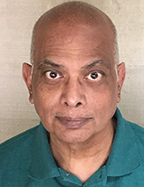A Moment in Bank History
Srikanth Sakaran: Introducing PC Apps to Chase Treasury Analytics

This goes back to 1983. Personal Computers (called PCs) had arrived a couple of years back. At the same time, fixed income markets were undergoing unprecedented change. In 1979, the FED changed the way it regulated rates, and this led to market volatilty. Dealers kept price books or manual calculators to determine price, yield, accrued interest, etc. These tools were fine when the intraday move was a few 32nds, but proved worthless when intraday moves exceeded 3 points (96 32nds).
The change in FED policy also led to the need for new products, such as currency options to enable customers to hedge the risk of non-dollar receivables. Bank of America and Citibank were making a major push in this new product and, in turn, getting the lending flow from large multinationals.
And in 1981 Fannie Mae started issuing a new type of instrument–the mortgage-backed security (MBS). The volume of issuance soared, and this product was an enormous source of profit for the investment banks.
Chase needed analytics to compete with the top Wall Street firms; Salomon Brothers, First Boston and Morgan Stanley were then the tops in fixed income and FX.
The analytics framework for Chase Treasury at the time relied on what were called minicomputers, by companies like PRIME. These were designed for fast computation and didn't require the overhead of IBM mainframes. Writing applications on these computers, however, required extensive programming knowledge. The large investment banks could hire programmers to write the needed applications for bonds, FX and MBS. Chase Treasury simply did not have the resources to hire such technical staff.
Chase Treasury did have genius level staff (Steve Allen, Ron Layard-Leisching) and savvy market professionals (Sam Lek, head of FX Options, and Ron Keenan, head of MBS Trading). Their talents, however, were underutilized due to the lack of access to computing power.
I joined Treasury in 1983 and was assigned to developing applications for the PRIME minicomputer. Writing a simple bond calculator or currency options pricer was proving difficult.
At some point in late 1983, I saw an article on how a gold trading firm had written an application on a PC using the BASIC programming language. BASIC was primarily a language taught to students on how to program (much like a bicycle with training wheels). I realized that I could create similiar applications on a PC, and it would take me far less time and the calculations would be enormously faster.
I took the idea to Ron Keenan. He approved it and worked through the beaurcratic maze to get a PC. I believe the cost was close to $5,000. I still needed the BASIC application builder on the PC. Alas, BASIC was not an approved language for development at Chase. Disregarding the rules, I purchased the application builder myself for $200. Then I took algorithms written by Steve Allen for pricing bonds and mortgages and literally transformed them into BASIC.
Voila! The pricing matched the industry standard Monroe Bond Calculator and the bond price/yield books.
Sam Lek and I worked out an algorithm to price currency options. I coded this in BASIC on the PC. Here the numbers matched what Sam was seeing at other firms.
I saw another article on how a chip could be added to the PC to boost the speed of mathematical calculations. The cost of the chip was $150. I again ordered it on my own. The chip arrived in two days but had to be installed on the PC. That required 'opening the hood'. I was reluctant to risk that on a $5,000 machine. I explained my dilemma to Sam Lek. He managed to get someone from the telecommunicatons team (they handled the phones, direct lines to brokers, etc.) to install the chip for me.
With the chip installed, the calculations for bonds, FX, and mortgages ran in miliseconds. Other desks began buying PCs for their own use.
As BASIC was still not an approved language, the calculations from these applications were to be 'unofficial', as in the results couldn't be used for P&L or meeting risk limits. The PC applications, however, provided the desks with the ability to compete, at some level, with the large dealers.
–– Srikanth Sankaran
A New Series
Do you have a story about something you did at Chase (or Chemical, Manufacturers Hanover or the other heritage banks) that helped change the way business was -- and is -- done? Do you want that bit of bank history preserved? Contact Andrea Axelrod at news@chasealum.org.
COMMENTS? Also write to Andrea...
